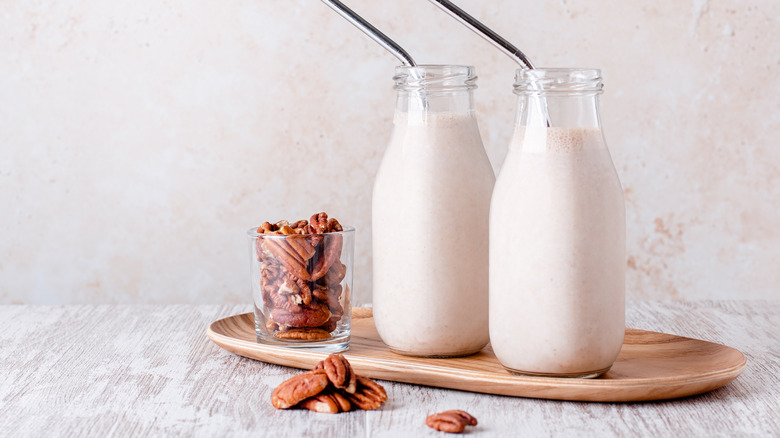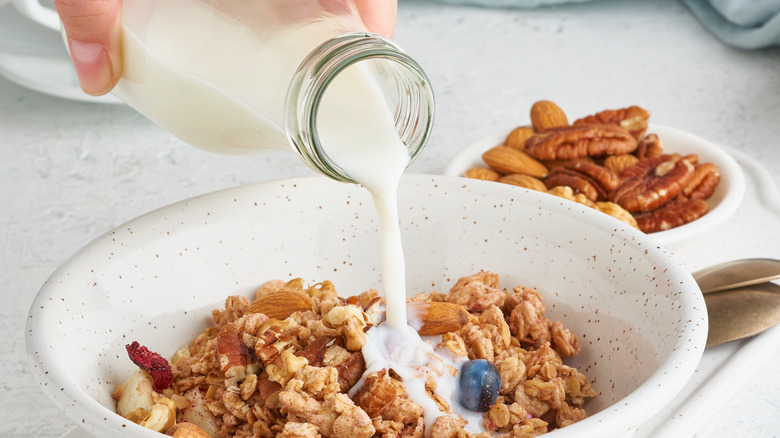Pecan Milk Is The Waste-Free Alternative You Need On Your Radar
Dairy-free milks like oat, soy, and almond may be all the rage, but when it comes to sustainability, there's one that stands out from the rest — and it's probably not on your radar yet. If you've never tried pecan milk, it's exactly what it sounds like: Blended pecans mixed with water and optional flavorings like salt, maple syrup, and vanilla extract. It's sweet and creamy, with a nuttier flavor than almond milk and a texture comparable to cashew milk.
But when you drink a glass of pecan milk, you're accomplishing more than just consuming a tasty dairy alternative. You may be helping the planet — at least, more than if you were to drink a different type of milk. Pecans are the only tree nut native to North America, so U.S. brands can harvest them locally, which results in a smaller carbon footprint than other nuts that are imported from different countries. In some cases, this means that pecans are harvested from the wild, using rain as their water source instead of irrigation. According to This PKN, a Texas-based pecan milk company, "Pecans do a lot for the local ecosystem — they foster the microbes, insects, and other plants that help local ecosystems thrive." Further cementing their status as a sustainable nut, products with pecans ranked highly on the Environmental Working Group's food scores, which take nutrition, processing, and environmental concerns into account.
How to use pecan milk
Aside from its tasty and sustainable attributes, there's another reason to test out pecan milk: It's a highly nutritious dairy alternative. Just one ounce of pecan halves boasts 20 grams of the "good" kinds of fats, aka monounsaturated and polyunsaturated fats that assist with nutrient absorption, per Georgia Pecan Trees. Plus, the nuts are rich in fiber, protein, vitamin E, iron, and magnesium, and low in sugar.
So once you get your hands on a bottle of pecan milk (or make it at home yourself), how should you use it? Feel free to drink it by itself, pour it in your cereal, or add it to your coffee or tea lattes. But you can also use it in place of any other type of milk in baked goods, chia pudding, hot chocolate, smoothies, mac and cheese, or oatmeal, where it will add richness and creaminess. For a nutritious dessert, try blending it with pecans, maple syrup, and mix-ins in an ice cream maker. You'll be treating yourself to something tasty, but also consuming a plant-based product with nine times less land use emissions than cow's milk, according to This PKN – a win-win in our book.

